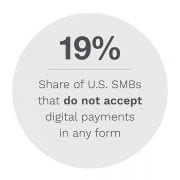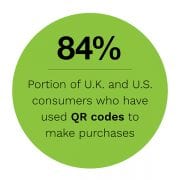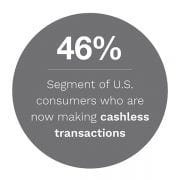Report: Sephora: Why (Payment) Variety Is The Spice Of Life For Beauty Retailers

Consumers have quickly adjusted to the commerce shifts created by the COVID-19 pandemic, and many of these changes are looking like they might become permanent. Customers are shopping online more often and are more frequently opting for contactless payment methods in stores, for example. They are also seeking out merchants that can swiftly and seamlessly offer them the payments and shopping experiences they crave.
 Merchants must therefore continuously examine how consumers are interacting with their products, websites and brick-and-mortar stores to craft standout payments experiences. Some may opt to alter their physical locations’ layouts, while others reassess the payment methods they offer. One recent study found that 29 percent of customers would stop shopping with retailers that they felt offered inadequate public health or safety measures, for example. Customers are also searching for online experiences that have been tailored to their exact needs, which could necessitate offering buy now, pay later (BNPL) methods or other emerging payment options at checkout.
Merchants must therefore continuously examine how consumers are interacting with their products, websites and brick-and-mortar stores to craft standout payments experiences. Some may opt to alter their physical locations’ layouts, while others reassess the payment methods they offer. One recent study found that 29 percent of customers would stop shopping with retailers that they felt offered inadequate public health or safety measures, for example. Customers are also searching for online experiences that have been tailored to their exact needs, which could necessitate offering buy now, pay later (BNPL) methods or other emerging payment options at checkout.
In the Anatomy Of A Consumer Payment Playbook: The Payments Experience Edition, PYMNTS analyzes how consumers’ payment behaviors are changing, the effects that the COVID-19 pandemic is having on these shifts and — most importantly — how merchants can keep up.
Sephora: The Key To Omnichannel Commerce Is Options, Options, Options
 Product variety has always been an important consideration for consumers when choosing merchants with which to shop, but the COVID-19 pandemic is also pushing the importance of offering multiple options when it comes time to pay. The health crisis is prompting consumers to further explore omnichannel experiences, which enable them to pick and choose where they shop, what they buy and how they pay. Offering customers the payment options they seek is thus becoming crucial to keeping them engaged, Carolyn Bojanowski, senior vice president and general manager for beauty retailer Sephora, explained in a recent PYMNTS interview. To learn more about how Sephora is tapping payment variety to create optimal omnichannel experiences, visit the Tracker’s Feature Story.
Product variety has always been an important consideration for consumers when choosing merchants with which to shop, but the COVID-19 pandemic is also pushing the importance of offering multiple options when it comes time to pay. The health crisis is prompting consumers to further explore omnichannel experiences, which enable them to pick and choose where they shop, what they buy and how they pay. Offering customers the payment options they seek is thus becoming crucial to keeping them engaged, Carolyn Bojanowski, senior vice president and general manager for beauty retailer Sephora, explained in a recent PYMNTS interview. To learn more about how Sephora is tapping payment variety to create optimal omnichannel experiences, visit the Tracker’s Feature Story.
Deep Dive: How Merchants’ Payments Approaches Must Change To Meet Customers’ Needs
 Merchants are used to keeping up with shifting trends and adjusting their products and marketing to engage consumers chasing after new items and experiences. This has become more challenging for companies during the ongoing COVID-19 pandemic, however, as consumers’ needs have evolved rapidly in a matter of months. Some recent trends represent existing shifts that have ramped up during the global health crisis, such as consumers’ exodus to digital shopping channels and increasing inclination to use emerging payment methods. Forty-six percent of U.S. consumers are now making cashless transactions using methods like mobile wallets and plastic cards, for example, and this is putting increased pressure on merchants to offer the payments experience for which consumers are searching. To learn more about consumers’ changing payment needs and why merchants must invest in key payments innovations, read the Playbook’s Deep Dive.
Merchants are used to keeping up with shifting trends and adjusting their products and marketing to engage consumers chasing after new items and experiences. This has become more challenging for companies during the ongoing COVID-19 pandemic, however, as consumers’ needs have evolved rapidly in a matter of months. Some recent trends represent existing shifts that have ramped up during the global health crisis, such as consumers’ exodus to digital shopping channels and increasing inclination to use emerging payment methods. Forty-six percent of U.S. consumers are now making cashless transactions using methods like mobile wallets and plastic cards, for example, and this is putting increased pressure on merchants to offer the payments experience for which consumers are searching. To learn more about consumers’ changing payment needs and why merchants must invest in key payments innovations, read the Playbook’s Deep Dive.
About The Playbook
The Anatomy Of A Consumer Payment Playbook, an FIS and PYMNTS collaboration, takes a data-driven look at how consumer payments are processed and what innovations, technologies and upcoming innovations can optimize the payment flow. The Playbook series also examines recent trends in the payments space to provide FIs and merchants with a complete guide to the ins and outs of consumer payments and to offer them a roadmap for navigating these challenges.

